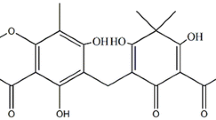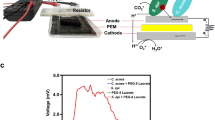Summary
Administration of killedPropionibacterium acnes to experimental animals leads to the development of hypersensitivity to the lethal and cytokine-inducing effects of endotoxin. This sensitizing property ofP. acnes is not always expressed by different bacterial preparations. Its expression depends very much on the conditions employed for the cultivation of this microorganism. The present study investigates which culturing conditions result inP. acnes preparations with optimal sensitizing properties. The composition of the medium, the culturing time and temperature as well as the type of cultivation (in minifermentor or stationary culture) were all varied for this purpose. The resulting bacterial preparations were killed at 65°C for 1 h and tested for sensitizing activity. The results show that stationary cultures ofP. acnes grown at 37°C for 4 to 5 days in the appropriate medium produce biologically active preparations with satisfactory sensitizing activity.
Similar content being viewed by others
References
Pulverer, G., Roszkowski, W., Beuth, H.J., Ko, H. L., Quie, P. Granulocyte activating factor released fromPropionibacterium acnes. A possible mediator of inflammation in acne vulgaris. Zbl. Bakt. Hyg. A 270 (1988) 246–251.
Huber-Spitzy, V., Arocker-Mettinger, E., Herkner, K., Schiffbänker, M., Georgiew, L., Steinkogler, F. J., Grabner, G. Diagnosis and therapy of bacterial endophthalmitis, and serum levels of inflammation markers. Infection 20 (1992) 122–127.
Neu, H. C. Microbiology of bacterial meningitis pathogens. Antibiot. Chemother. 45 (1992) 52–67.
Abolnik, I. Z., Eaton, J. V., Sexton, D. J. Propionibacterium acnes vertebral osteomyelitis following lumbar puncture: case report and review. Clin. Infect. Dis. 21 (1995) 694–695.
Dworniczek, E., Modarska, H., Bizuniak, I., Smogor, W., Szklarz, E. Anaerobic propionibacteria in opportunistic infections. Medycyna Doswiadczalna i Mikrobiologia 45 (1993) 219–222.
Halpern, B. N., Prévot, A.-R., Biozzi, G., Stiffel, C., Monton, D., Morard, J.C., Bouthillier, Y., Decreusefond, C. Stimulation de l'activité phagocytaire du système réticuloendothélial provoquée parCorynebacterium parvum. RES J. Reticuloendothel. Soc. 1 (1964) 77–96.
Green, S., Dobrjansky, M. A., Chiasson, M. A., Carswell, E., Schwartz, M. K., Old, L. J. Corynebacterium parvum as the priming agent in the production of tumor necrosis factor in the mouse. J. Natl. Cancer Inst. 59 (1977) 1519–1522.
Katschinski, T., Galanos, C., Coumbos, A., Freudenberg, M. A. Gamma interferon mediatesPropionibacterium acnes-induced hypersensitivity to lipopolysaccharide in mice. Infect. Immun. 60 (1992) 1994–2001.
Cove, J. H., Holland, K. T., Cunliffe, W. J. Effects of oxygen concentration on biomass production, maximum specific growth rate and extracellular enzyme production by three species of cutaneous propionibacteria grown in continuous culture. J. Gen. Microbiol. 129 (1983) 3327–3334.
Fujimura, S., Nakamura, T., Pulverer, G. Purification and properties of a proline iminopeptidase fromPropionibacterium acnes. Zbl. Bakt. Hyg. A 260 (1985) 175–183.
Koukalova, D., Kod'ousek, R., Hajek, V., Kolar, M. Experimental nonspecific immunostimulation by thePropionibacterium acnes vaccine. Acta Univ. Palacki, Olomuc, Fac. Med. 133 (1992) 19–23.
Mara, M., Julak, J., Bednar, M., Ocenaskova, J., Mikova, Z., Dohnalova, A. The influence ofPropionibacterium acnes (Corynebacterium parvum) fractions on immune responsein vivo. Zbl. Bakt. 281 (1994) 549–555.
Sneath, P. A., Mair, N. S., Sharpe, M. E., Holt, J. G. (eds. Bergey's manual of systematic bacteriology. Vol. 2. Williams and Wilkins, Baltimore 1986, pp. 1346–1353.
Schlecht, S., Galanos, C. Influence of the glucose concentration on the yield of biomass and lipopolysaccharide inSalmonella cultures. Zbl. Bakt. 281 (1994) 30–37.
Müller, R. Medizinische Mikrobiologie. 4th ed. Urban und Schwarzenberg, München 1950, p. 137.
Author information
Authors and Affiliations
Rights and permissions
About this article
Cite this article
Schlecht, S., Freudenberg, M.A. & Galanos, C. Culture and biological activity ofPropionibacterium acnes . Infection 25, 247–249 (1997). https://doi.org/10.1007/BF01713155
Received:
Accepted:
Issue Date:
DOI: https://doi.org/10.1007/BF01713155




